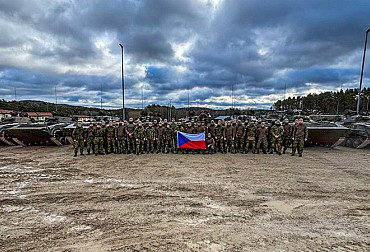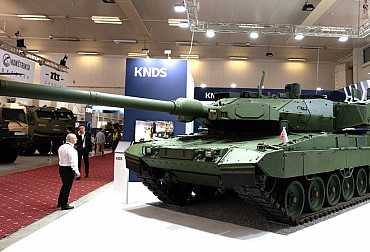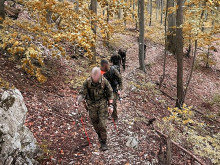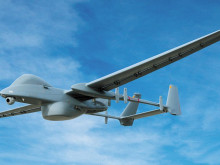Portuguese Pandurs II are older, but offer a more varied range of abilities - inspiration for the Czech Army?
In connection with the ongoing tender for tracked Infantry Fighting Vehicles, another acquisition is occasionally reminded of: Pandur II wheeled Infantry Fighting Vehicles, on which the mechanized infantry of the 4th Rapid Deployment Brigade relies today. The hope that we will not step into the same river still exists. There are several different parallels in both projects. There was talk, for example, of the Portuguese acquisition of Pandurs II. How are the Portuguese doing today, and can we find any inspiration in their use of the vehicles?
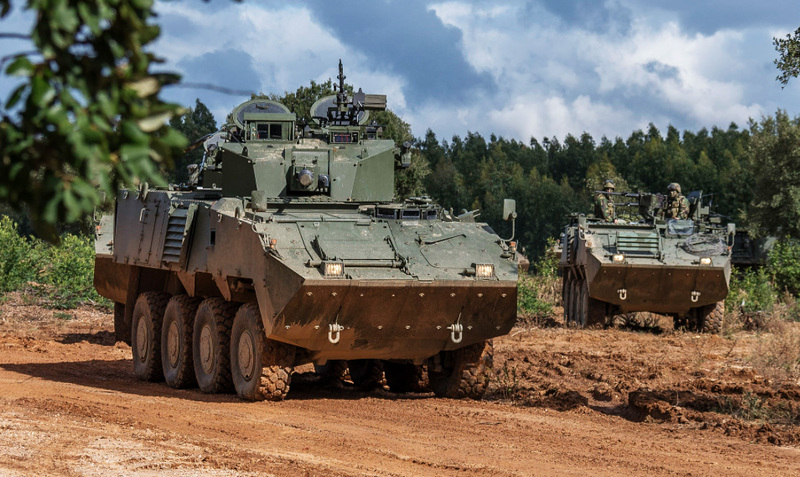 Picture: Portuguese Pandurs II VBR Canhão 30 (left) and VBR ICV (right) | Allied Joint Force Command Brunssum / CC BY-SA 2.0
Picture: Portuguese Pandurs II VBR Canhão 30 (left) and VBR ICV (right) | Allied Joint Force Command Brunssum / CC BY-SA 2.0
The comparison of the acquisition of the tracked and wheeled IFVs is mentioned not only because of the risk that the contract for the new vehicles will be signed by the resigned minister, as was the case with the Pandurs. As a result, it led to further delays, and due to the effects of the economic crisis, the contract was substantially reduced, and the Army is still struggling with this unfortunate development.
After the professionalization of the Army was its demand for 240 modern armored vehicles. The 2006 contract was signed (after the elections) for 199 Pandurs II (whose selection was accompanied by protests by the unsuccessful bidder, Patria, Finland). The following year, the new government abolished it, and in order to avoid international arbitration, signed a contract for 107 vehicles that the Czech Army has in its arsenal to this day, to which it added 20 special KOVVŠ and KOVS variants developed and manufactured in Kopřivnice last year.
Already in the years 2006-2009, the order was compared with the Portuguese acquisition of Pandurs II 8x8. In 2005, Portugal purchased 260 of these vehicles for € 364 million for its Army Intervention Brigade and Marines (and, by the way, Patria also protested). It is always problematic to compare concluded contracts for the purchase of military equipment by to the number of pieces and the price, because other agreed requirements play a crucial role, from specific requirements through the supply of spare parts and ammunition to training and vehicle maintenance conditions. When converted to pieces, the Portuguese paid about 40 million crowns for each of their 260 Pandurs. The Czech unit price each of the 107 original vehicles was 134 million.
In 2010, the Ministry of Defense explained the difference was given by VAT, specific logistical support for the Czech Army, training, ammunition supplies. Higher demands of the Czech Army concerning the capabilities and parameters of the vehicles. The Portuguese were to be satisfied with the basic level. Also inflation. After all, the press release for this is available on the MOD website to this day.
Among other things, the Czech Ministry of Defense argued that there were only 32 vehicles in the Portuguese acquisition comparable to those that make up the majority of the Czech fleet. This meant that the Portuguese bought only 32 pieces of the wheeled IFV version with a turret equipped with a 30 mm automatic cannon. However, 99 of them were acquired for the Czech Army. Let's look at other variants, from where, on the other hand, it will be clear which variants are missing in the Czech fleet. And now we will completely disregard the comparison of the prices of that time. We should be interested in the future of Czech Army equipment. Let the judiciary solve old possible mistakes, if there is anything left to solve. After all, the acquisition of the Portuguese Pandurs was accompanied by an investigation into allegations of corruption.
The relatively low number of wheeled IFVs in the Portuguese army is due to the fact that the Portuguese acquired mainly 125 pieces of vehicles in the basic version of the Armored Personnel Carrier for the transport of their infantry. Of these, ten vehicles with the main weapon (12.7 mm machine gun) in a remote-controlled weapons station, the remaining with the same weapon manually controlled by the gunner. Only eight APCs were purchased for the Czech Army within the original 107 vehicles, in specialized variants KOT-Ž as an engineer carrier and KOT-ZDR as an ambulance. Today, they also include the aforementioned six command and staff (KOVVŠ) and fourteen communications (KOVS) Pandurs.
Specialized versions in the Portuguese army and navy include 19 command post vehicles, 7 recovery and maintenance vehicles, 10 medical evacuation vehicles, 9 engineer squad vehicles, 6 radio access point station vehicles, 4 reconnaissance and surveillance vehicles. Apart from the details and different numbers, Czech Army has these in different configurations (some of them as variants of wheeled IFV). In addition, however, the Portuguese have two interesting versions, which are missing in the 4th Rapid Deployment Brigade’s arsenal. These are 33 self-propelled 120mm mortars and 15 anti-tank vehicles with TOW missiles. Also interesting is the variant, yet not acquired in the end, with a turret with a 105mm cannon.
The Czech Armed Forces also plans to purchase self-propelled mortars. At the same time, it is building a "light" brigade on wheels and a "heavy" brigade on tracks. If the wheeled platform cannot keep up with the tracked vehicles in very difficult terrain, the tracked platform, on the other hand, will not keep up with the wheeled vehicles during fast movements. If there are formations in the world that combine wheels and tracks on their armored vehicles, it would be difficult to find ones that complement the wheeled vehicles with special vehicles on tracks. It works rather the other way around. The form of the new weapon has not yet been decided, but it can be expected that a wheeled chassis will be preferred, and it would make no sense for it to be a different platform than the Pandur II.
As for anti-tank Pandurs, Concept of the Build-up of the Czech Army 2025 says "The combat capabilities of light motorized battalions will be strengthened by the ability to destroy armored targets to the level of mechanized battalions." And to support the ability that our wheeled IFVs already have, thanks to the SPIKE missiles, with a dedicated vehicle with greater firepower would strengthen the chances of the 4th Brigade's battalions to deal with a heavily armed enemy.
The variant with cannon armament would be a rather unnecessary bonus. American Strykers MGS of the same purpose are being decommissioned, and for the purposes of direct fire support, the Americans want to continue to rely on automatic weapons of smaller calibers, including vehicles with anti-tank guided missiles. But what our military certainly lacks is a mobile anti-aircraft system. Neither the transported RBS-70 and RBS-70 NG systems nor the newly acquired SPYDERs will play such a role. RBS-70 needs to be unloaded for deployment, and SPYDERS are acquired as an element of strategic defense of airspace, respectively defense of priority potential objectives. They will not accompany maneuver elements of the Army. In addition to the anti-tank Pandur, Czech Army would certainly be able to use anti-air variants in the future, similar to those developed by the Americans (GDLS in cooperation with Leonardo DRS) with Stryker IM-SHORAD (Initial Maneuver Short-Range Air Defense) or Germans (KMW and Rheinmetall) with Boxer, either in a variant with an automatic cannon or with guided missiles (in cooperation with MBDA).
The Portuguese do not have an anti-air option. In their case, the air defense of the units is provided by the old American Chaparraly with Sidewinder missiles on the chassis of the M113 APC. They are to be replaced by 2026, and are more than likely to be replaced by a wheeled chassis that is easier to transport, faster and easier for maintenance.
Source: own work, ejercito.defensa.gob.es, Ministry of Defense of the Czech Republic















